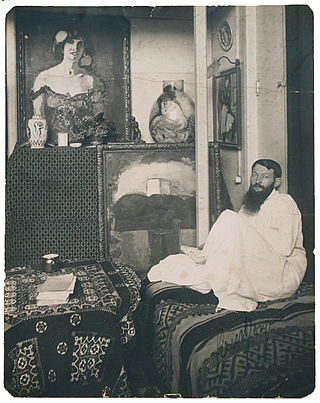
Cornelis Theodorus Maria "Kees" van Dongen was a Dutch-French painter who was one of the leading Fauves. Van Dongen's early work was influenced by the Hague School and symbolism and it evolved gradually into a rough pointillist style. From 1905 onwards – when he took part at the controversial 1905 Salon d'Automne exhibition – his style became more and more radical in its use of form and colour. The paintings he made in the period of 1905–1910 are considered by some to be his most important works. The themes of his work from that period are predominantly centered on the nightlife. He painted dancers, singers, masquerades, and theatre. Van Dongen gained a reputation for his sensuous – at times garish – portraits, especially of women.

Maurice de Vlaminck was a French painter. Along with André Derain and Henri Matisse, he is considered one of the principal figures in the Fauve movement, a group of modern artists who from 1904 to 1908 were united in their use of intense colour. Vlaminck was one of the Fauves at the controversial Salon d'Automne exhibition of 1905.
The year 1900 in art involved some significant events and new works.

The Dogs of War (1974) is a war novel by British writer Frederick Forsyth, featuring a small group of European mercenary soldiers hired by a British industrialist to depose the government of the fictional African country of Zangaro. The story details a geologist's mineral discovery, and the preparations for the attack: soldier recruitment, training, reconnaissance, and the logistics of the coup d'état. Like most of Forsyth's work, the novel is more about the protagonists' occupational tradecraft than their characters. The source of the title, The Dogs of War, is Act III, scene 1, line 270 of Julius Caesar (1599), by William Shakespeare: Cry, 'Havoc!', and let slip the dogs of war.
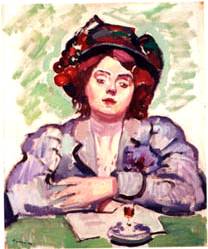
Charles Camoin was a French expressionist landscape painter associated with the Fauves.
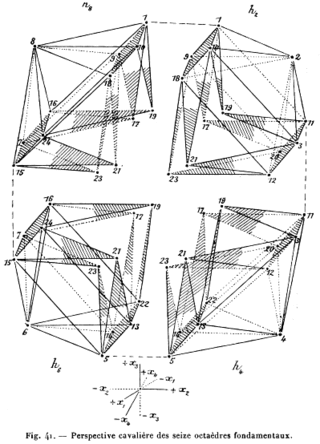
Maurice Princet was a French mathematician and actuary who played a role in the birth of cubism. He was an associate of Pablo Picasso, Guillaume Apollinaire, Max Jacob, Jean Metzinger, and Marcel Duchamp. He is known as "le mathématicien du cubisme".
Events from the year 1876 in France.
Events from the year 1958 in France.

Fernand Mourlot, son of Jules Mourlot, was the director of Mourlot Studios and founder of Editions Mourlot.

Fauvism is a style of painting and an art movement that emerged in France at the beginning of the 20th century. It was the style of les Fauves, a group of modern artists whose works emphasized painterly qualities and strong colour over the representational or realistic values retained by Impressionism. While Fauvism as a style began around 1904 and continued beyond 1910, the movement as such lasted only a few years, 1905–1908, and had three exhibitions. The leaders of the movement were André Derain and Henri Matisse.
The Salon des Tuileries was an annual art exhibition for painting and sculpture, created June 14, 1923, co-founded by painters Albert Besnard and Bessie Davidson, sculptor Antoine Bourdelle, architect Auguste Perret, and others.

Berthe Weill was a French art dealer who played a vital role in the creation of the market for twentieth-century art with the manifestation of the Parisian Avant-Garde. Although she is much less known than her well-established competitors like Ambroise Vollard, Daniel-Henry Kahnweiler and Paul Rosenberg, she may be credited with producing the first sales in Paris for Pablo Picasso and Henri Matisse and with providing Amedeo Modigliani with the only solo exhibition in his lifetime.
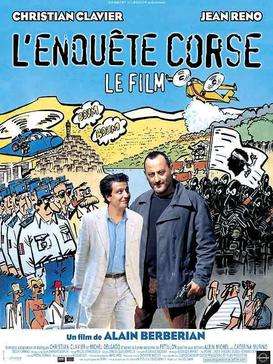
The Corsican File is a 2004 French comedy film directed by Alain Berbérian. It is based on the comic book of the same name, one of the stories from the Jack Palmer series by René Pétillon.
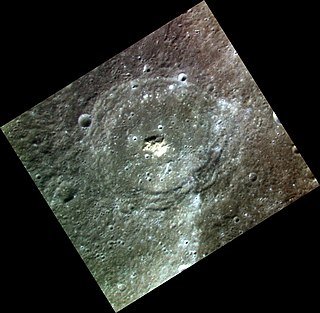
Gluck is a crater on Mercury. It has a diameter of 100 kilometers. Its name was adopted by the International Astronomical Union (IAU) in 1979. Gluck is named for the Austrian composer Christoph Willibald Gluck, who lived from 1714 to 1787.

Clazuril is a drug used in veterinary medicine as a coccidiostat.
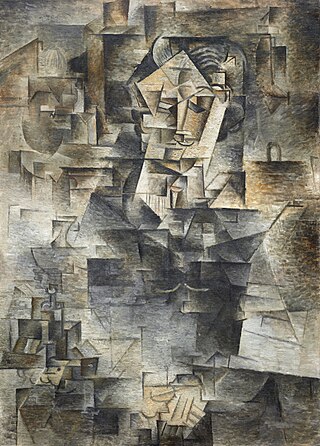
Portrait of Daniel-Henry Kahnweiler is an oil on canvas painting by Pablo Picasso in the Analytical Cubism style. It was completed in the autumn of 1910 and depicts the prominent art dealer Daniel-Henry Kahnweiler, who played an important role in supporting Cubism. The painting is housed in the collection of the Art Institute of Chicago.
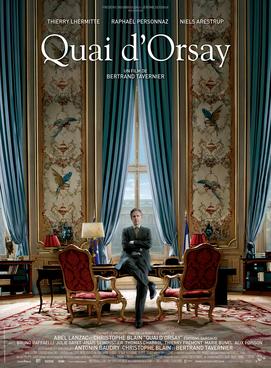
The French Minister is a 2013 French comedy film directed by Bertrand Tavernier. Based on Quai d'Orsay, a comic strip by Christophe Blain and Abel Lanzac, the film takes an initially comedic look at the French Foreign Ministry under Dominique de Villepin but moves into more serious territory as France, in co-operation with Germany, opposes the 2003 Invasion of Iraq.
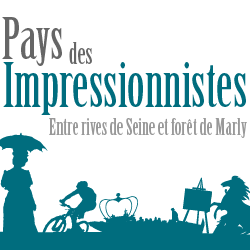
The Pays des Impressionnistes is a certification mark created by the Syndicat intercommunal à vocations multiples des Coteaux de Seine in 2001 to promote the cultural heritage of this touristic area. Nine municipalities in the Yvelines department of France bordering the loop of the Seine River, where, during the nineteenth century, impressionist painters exercised their art, are associated with this creation: Bougival, Carrières-sur-Seine, Chatou, Croissy-sur-Seine, Le Pecq, Le Port-Marly, Louveciennes, Marly-le-Roi and Noisy-le-Roi. There is the Path of the Impressionists, four hiking trails dotted with reproductions of paintings, reflecting the still remarkable character of this landscape of Impressionist sites which has been proposed for inclusion in the World Heritage Site since 2009. Rueil-Malmaison, in the Hauts-de-Seine department, joined them in 2010, when eight of these municipalities have entrusted development task of the Pays des Impressionnistes to the visitor center of Marly-le-Roi, which organises Impressionist cruises along the banks of the Seine, as well as visits of ateliers of contemporary painters.

Honoré Vlamynck was a Belgian professional footballer, best remembered for his 13 year career as a forward in the Belgian First Division with R. Daring Club Molenbeek. He scored three goals in four appearances for Belgium at international level. Vlamynck guested for English club Leicester Fosse during the First World War.

Michael Harlow is a poet, publisher, editor and librettist. A recipient of the Katherine Mansfield Menton Fellowship (1986) and the University of Otago Robert Burns Fellowship (2009), he has twice been a poetry finalist in the New Zealand Book Awards. In 2018 he was awarded the Prime Minister's Award for Literary Achievement, alongside playwright Renée and critic and curator Wystan Curnow Harlow has published 12 books of poetry and one book on writing poetry.

















